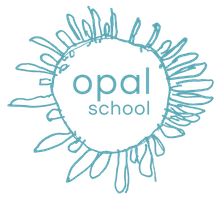The first day of fall brought to us beautiful weather and in Opal 1 we took time to enjoy it. We hiked to the Upper Meadow and spent some time getting to know a new area of the Arboretum. We met some very special trees, built a large nest that was big enough for everyone to sit in, and had a lot of fun pretending to be birds as we zoomed down a hill!
I can’t help but smile and feel grateful to be a part of this brand new community. The energy and excitement around being together grows as we continue to learn new things about one another, become more comfortable in our new space, and find time to connect with each individual.
I found myself taking a step back this week to observe and notice the many and varied interactions. I was struck by the way these children (who have only been together for three weeks!) were connecting with each other. I saw children sharing materials, asking each other questions, stating their needs and wants in calm, composed ways and much, much more! And of course, nothing is perfect all the time; there have been misunderstandings and bumps along the way. But even in those tricky times, the children in Opal 1 have been willing to stop and listen.
Here's a good example: In the beginning of the year, we always take the time to get to know the materials we use that will support our work. Unifix cubes are a common math material and it is important for children to have plenty of time playing and discovering before we ask them to use the material for specific purposes. So, the children started out at different tables building, stacking, putting together, making patterns, and counting.
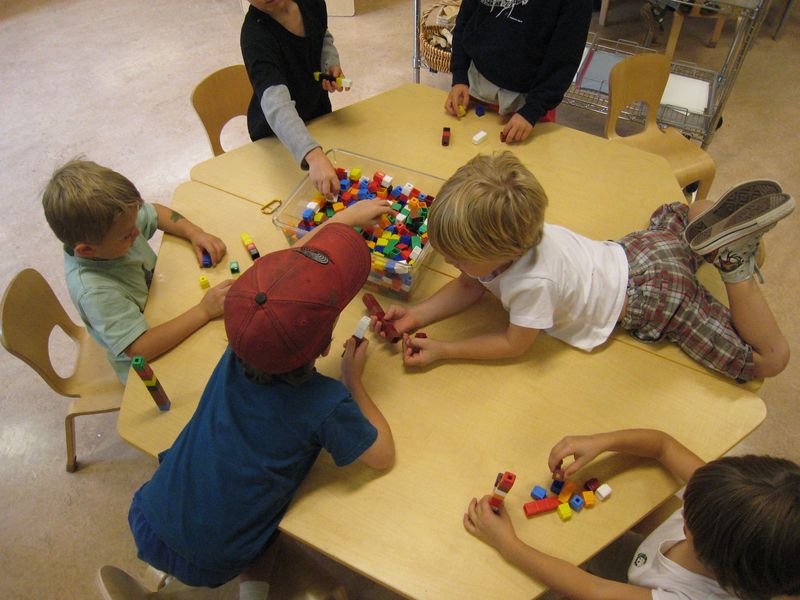
Before long the children discovered (as do most kindergarteners who first encounter unifix cubes) that they can put them together to make the longest train of cubes ever!
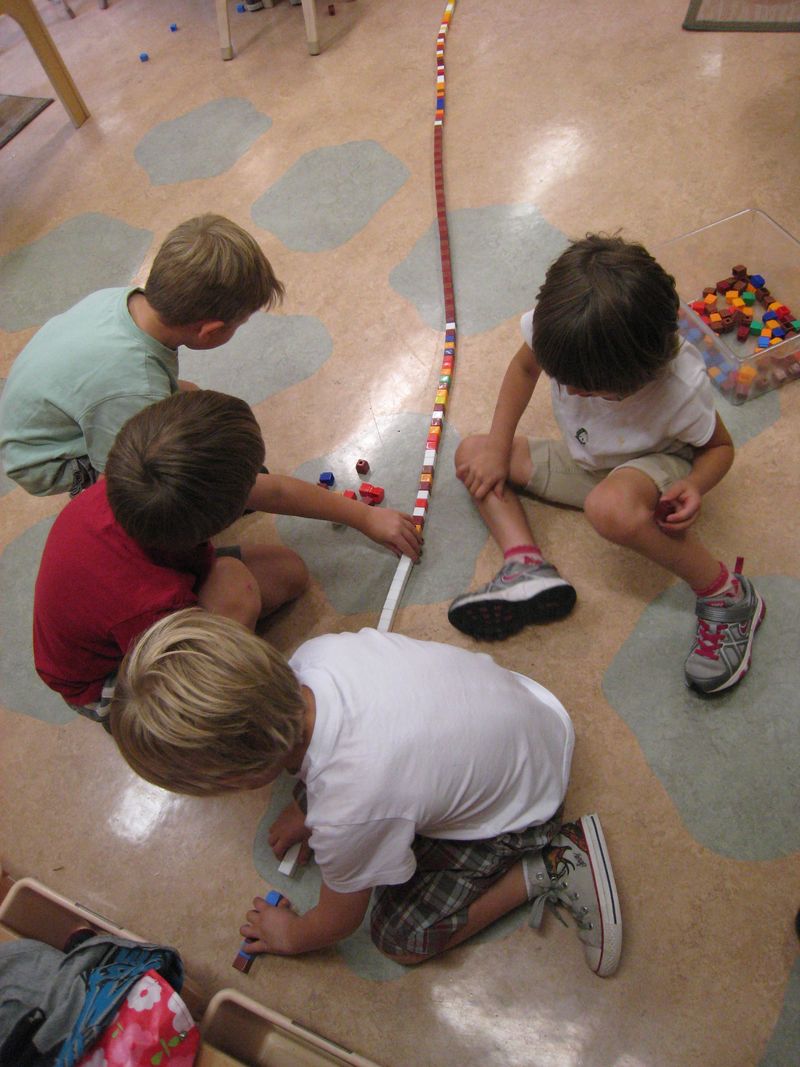
There was a buzz growing through the room as slowly each child discovered they could be a part of making the longest unifix cube train ever. This was an exciting idea to many and you could see the impressed looks on their faces as the train started getting longer and longer, filling up the room and even spilling out into the hallway. I saw sheer joy and excitement on their faces as they worked together to make something so big!
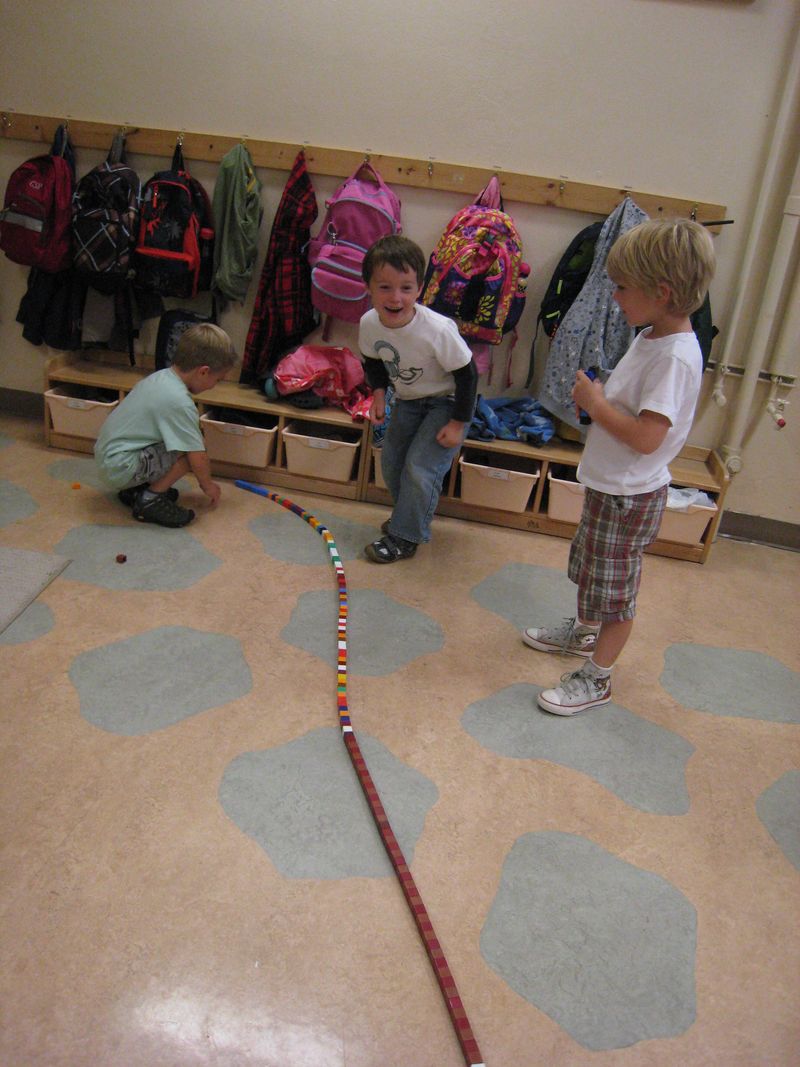
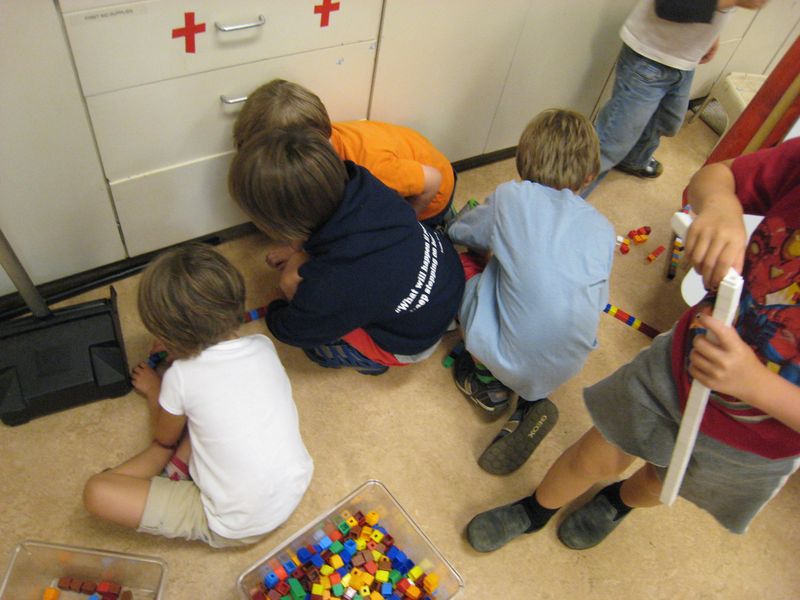
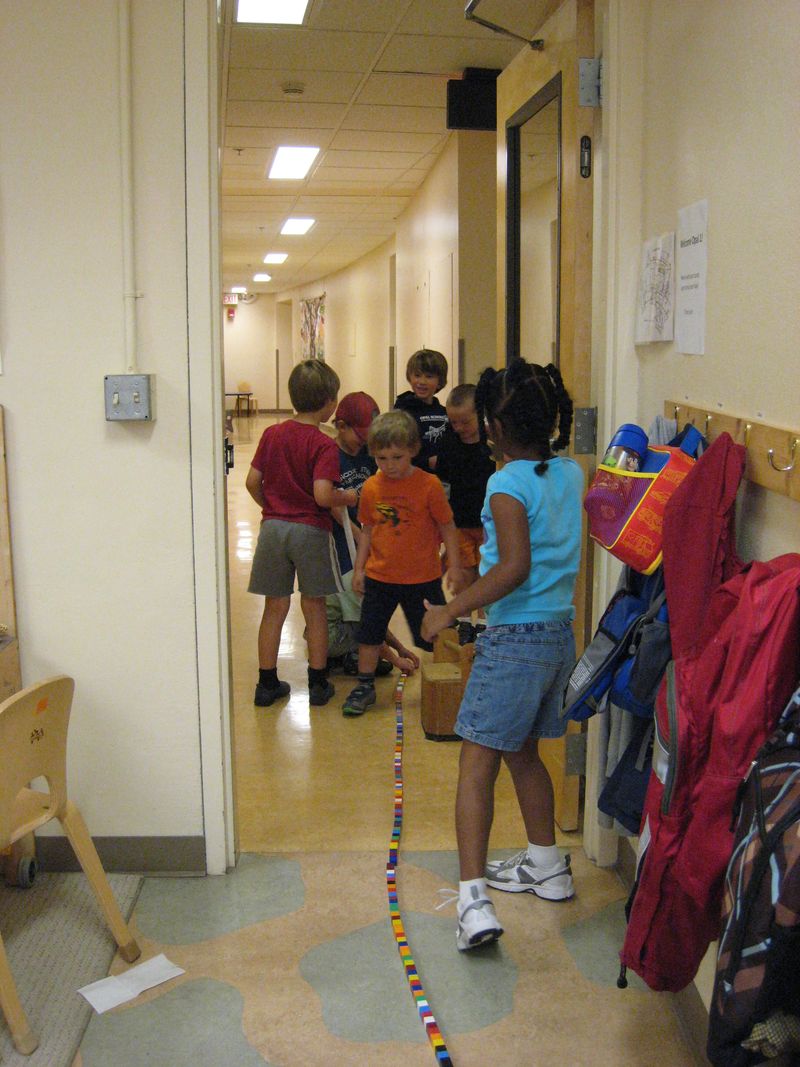
Eventually we had to clean up the unifix cubes, but first we gathered together to talk about what felt so good about that experience.
AG: We made it so big!
LG: We all used teamwork to make it!
RB: I think we are going to use all of the cubes!
CM: Can we do it again tomorrow?
At first I was hesitant to get the unifix cubes out again the next day. I wondered if a second experience with the unifix cubes would hold the same feelings of togetherness and accomplishment that the initial experience held. I wanted them to hold onto this memory and the excitement that came along with it.
But they were telling me they needed more time, so we got the unifix cubes back out the next day. I watched and waited and listened and pretty soon I heard this:
"We're making a circle this time, that way it is never-ending!"
I saw this as another opportunity to check in. I brought them together and wondered, "What is happening with the unifix cubes today? What are you discovering?" And again I heard:
ZB: We made it into a circle this time, so it never ends!
LD: Yeah it's a big circle. It's like our community.
CM: It's like a burrow and we can all be the animals inside it.
Teacher: If it's like our community, what kinds of things did we need to keep it together? To keep it never-ending?
LG: Teamwork! We couldn't make it without teamwork!
LD: Each cube is like one person's idea. We need them all or the whole thing breaks.
They had created an image we could all hold in our minds. A circle that represented our community: our Opal 1 Community Burrow, with each piece representing the individuals that make up the whole.
We talked again the next day about what we needed in our circle to keep it together, to keep it never-ending. These are the things we've decided we need everyone to do. We'll continue to add to this as we learn more about each other and what we need as a community, but what an amazing place to begin.
-
Share our ideas
-
Help each other
-
Use teamwork
Reflections from Susan MacKay:
What does it take to support children to be self-directed, engaged learners? In her book, Mind in the Making, Ellen Galinsky describes 7 principles that adults can follow to do their part. They are:
- Establish a trustworthy relationship with children.
- Help children set and work toward their own goals.
- Involve children socially, emotionally, and intellectually.
- Elaborate and extend children's learning.
- Help children practice, synthesize and generalize.
- Help children become increasingly accountable.
- Create a community of learners.
In Kerry's post, you can see evidence of all of these principles at work. The skill of self-directed, engaged learning is one of the most valuable and transferable habits of mind we will need in this ever-changing world. It is not a skill that can be taught directly, but develops through experiences and approaches that are designed with these principles in mind. When learning is this joyful and meaningful, the drive to learn more is never-ending!

